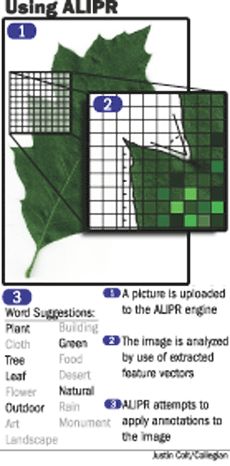Just as "Google it" has become an everyday phrase, two Penn State researchers hope to make the words "ALIPR it" just as common.
Jia Li, associate professor of statistics, and James Wang, associate professor of information science and technology, have created a program called Automatic Linguistic Indexing of Pictures-Real Time (ALIPR).
"It is a system that if you give it a picture without any textual information, just like a jpeg picture, the computer will automatically describe what the picture is about," Li said.
More than a billion pictures or images on search engines do not have text associated with the image, Wang said.
"If there is no text with the picture, then you can't match keywords to the picture, and the picture is basically invisible to search engines," Li said.
ALIPR will allow more images to be located by teaching the computer keywords associated with an image, similar to teaching a human what a tiger looks like, Wang said.
"When using ALIPR, a computer can suggest keywords for uploaded
pictures," Wang said. "These computers can have 15 suggestions for keywords and a person can add more so that every time the words are searched, the image will be located."
Many images are not annotated because it is very labor-intensive, Wang added.
"We have made a lot of progress over the years, but not as successful as text," Wang said. "In text search you don't have to understand the words, but when searching for images, we believe you really need computers to understand the images."
Mor Naaman, a scientist at Yahoo research Berkeley, said he believes the computers will not be able to analyze the difference between context and content.
"This system is a good start, but it will never be complete or perfect," he said.
Naaman explained the difficulty he thinks a computer will have distinguishing between a picture's content and context using an example of a clock tower.
"The computer will believe an image of a clock tower at night and an image of it in the morning are two different pictures because it will not understand context of night and day," he said.




